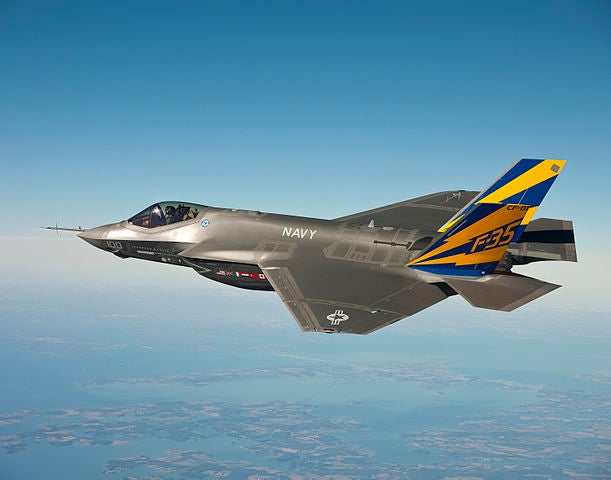
The US F-35 Joint Program Office (JPO) has cancelled the alternative BAE Systems-built helmet mounted display system (HMDS) development, for the Lockheed Martin-built F-35 Lightning II joint strike fighter (JSF) aircraft.
The JPO will now focus on maturing the Rockwell Collins Elbit Systems of America Vision Systems’ Generation 2 (Gen 2) helmet, which is being used in training and testing.
BAE Systems began developing the alternate helmet in September 2011, under a parallel helmet development initiative – incorporating a more traditional fighter helmet equipped with night vision goggles – in case the maturity issues on the Gen 2 helmet could not be satisfactorily resolved.
The initiative is also aimed to reduce risk, resolve technical issues and drive down development and production costs on the Rockwell Collins-produced helmet.
The decision to continue with the Gen 2/3 helmet production will save $45m in funds, required to completely enhance the BAE helmet.
Lockheed Martin F-35 Lightning II programme executive vice-president and general manager, Lorraine Martin, said Lockheed and its suppliers will continue to focus on developing and delivering the helmet and provide capabilities to troops in support of the services’ declaration of initial operating capability.
"The government’s decision to proceed exclusively with the principal helmet is indicative of their confidence in the helmet’s performance and the successful resolution of previously identified technical challenges," Martin said.
The HMDS programme will introduce a Gen 3 helmet, beginning with aircraft in low rate initial production lot 7, that features an improved night vision camera, new liquid crystal displays, automated alignment and software enhancements.
Scheduled to be introduced to the fleet in 2016, the Gen 3 helmet is expected to complete test and development in 2017.
The US Marine Corps will declare the F-35B aircraft Gen 2 helmet initial operational capability in July 2015.
In addition to providing fighter pilots with unprecedented situational awareness, the F-35’s HMDS will provide the information needed for pilots to complete their missions through all weather conditions, day or night.
Image: US Navy’s F-35C aircraft conducting during flight. Photo: courtesy of Andy Wolfe.





